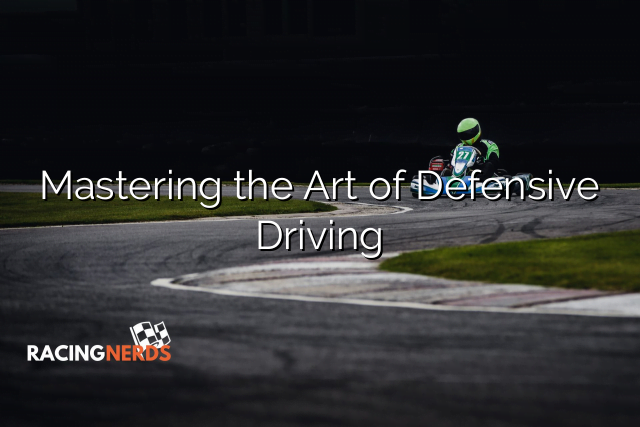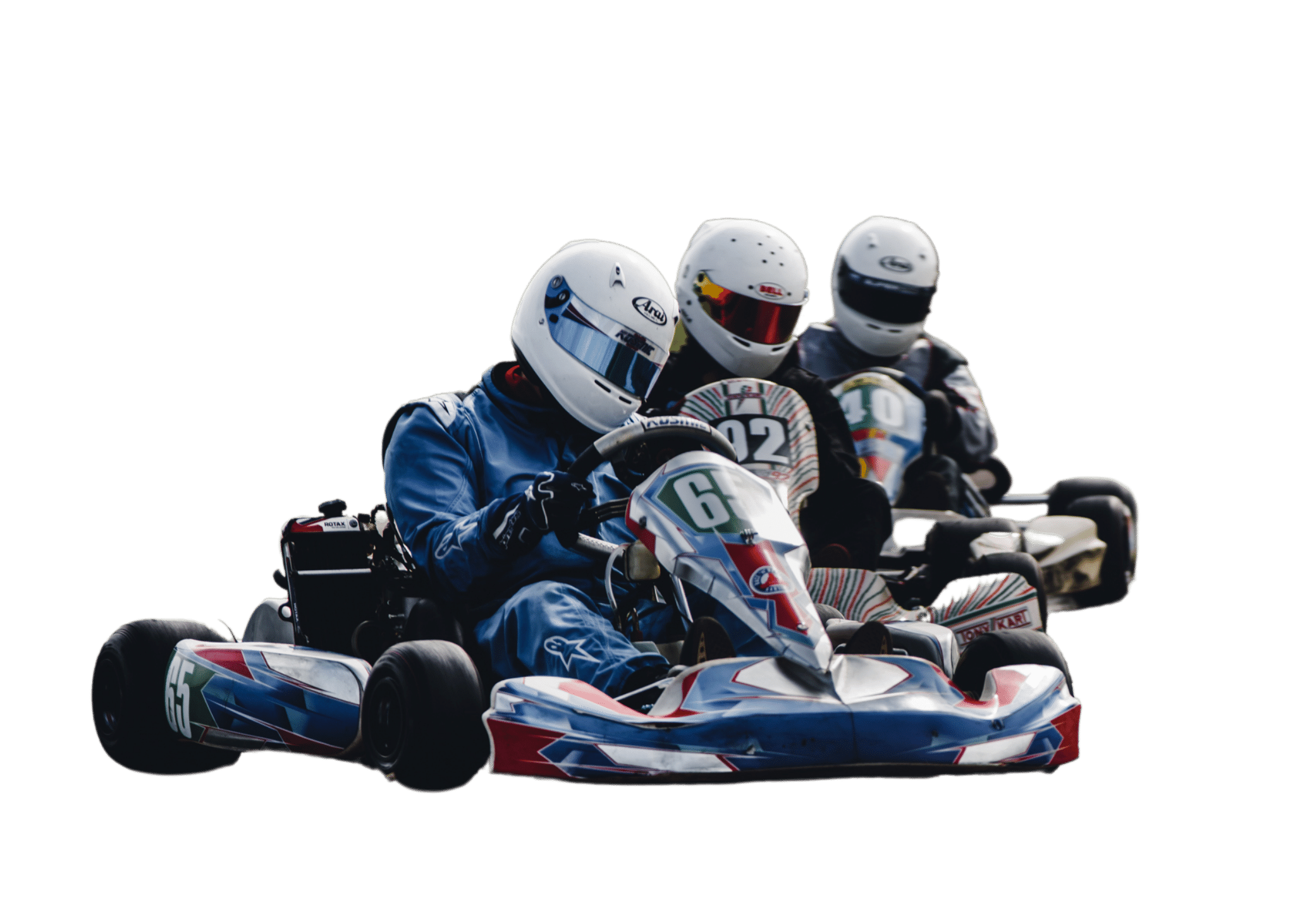
In the realm of motorsports, the mastery of defensive driving is a subtle yet complex art that requires a driver’s full spectrum of skills, both mental and physical. At the heart of this practice lies the ability to predict and neutralize the threats posed by competitors, all while maneuvering at breakneck speeds. This proficiency goes beyond mere reaction; it calls for an anticipatory approach, where foresight and strategic positioning play critical roles.
As one navigates through the intricacies of maintaining the inside line or executing the perfect brake into a corner, it becomes evident that defensive driving is an intricate dance—a confluence of agility, precision, and tactical acumen.
In the following discourse, we shall explore the multifaceted layers that compose this essential skill set, examining not only the technical aspects but also the psychological fortitude required to excel under the duress of competition.
The question then arises: what are the secrets that allow the elite to effectively shield their position and what can aspiring drivers do to incorporate these techniques into their own repertoire?
Cultivating composure is an often underestimated yet critical aspect of defensive driving mastery, requiring drivers to maintain a level head and steady emotions under the high-pressure conditions of racing.
In the crucible of competition, managing emotions is paramount; it allows drivers to make judicious decisions rather than succumbing to the heat of the moment. Staying focused on the task at hand is essential for minimizing errors and executing maneuvers with precision.
The ability to remain calm isn’t just advantageous; it’s a requisite for success. By mastering self-control, drivers can prevent panic-induced mistakes, such as improper defensive lines or braking too late. Such discipline ensures that drivers are not just reacting to their environment, but strategically navigating through it, thereby safeguarding their position and optimizing their performance on the track.
While maintaining composure under pressure is fundamental, strategically leveraging the inside line of the track is a powerful technique for defending one’s position against competitors. Masterful cornering tactics necessitate a driver to seize the inside track, particularly when approaching the apex of a turn. This defending apex strategy not only shortens the path taken through the corner but also places the defending driver in an optimal position to dictate the pace and block overtaking maneuvers.
To utilize the inside advantage effectively, a driver must develop acute awareness of the racing environment and possess the ability to anticipate an opponent’s strategy. By commanding the inside line, one forces competitors to attempt a pass from the less advantageous outside, where the likelihood of successful overtaking diminishes. This inside advantage, wielded with precision, can be the linchpin in maintaining a lead position under duress.
Mastering the art of braking is essential for a defensive driver to maintain control and position on the race track. Improving reaction time to braking cues and understanding the limits of your vehicle’s braking system are the cornerstones of a superior defensive strategy. It is vital to practice braking techniques that allow for the car to be settled before entering a corner, thereby enhancing cornering skills and preventing loss of traction.
Efficient braking is not about how late you can brake, but about how quickly you can get back to the throttle. By honing your braking techniques, you ensure the car is in the optimum position and speed for corner exit, which is crucial in keeping competitors at bay and executing a flawless defense on the track.
Identifying the precise moment for an overtake requires a deep understanding of the race track and the competitor’s behavior. A seasoned driver recognizes that successful maneuvers hinge on identifying vulnerable spots where the opponent may be weaker or less prepared. Mastery in defensive driving techniques not only helps in maintaining one’s position but also in assessing when others are susceptible to being passed.
Key sections on the track often present these opportunities—like the braking zones before slow corners or the exits of hairpins where the leading car might struggle to regain speed. The art lies in the anticipation of these moments, coupled with the readiness to capitalize on them without compromising safety.
Precision in this complex decision-making process defines the craft of defensive driving.
To effectively pull away from a pursuer in racing, a driver must expertly balance the fine line between aggressive speed and the conservation of their vehicle’s performance for the duration of the race. Mastering the pull-away strategy involves maximizing speed through precision driving and strategic positioning. One must utilize every aspect of the track, from the racing line to braking points, to extend the gap between themselves and the competition.
This requires not only a deep understanding of the car’s capabilities and limits but also a keen awareness of the surrounding drivers. Calculated risk-taking, particularly in overtaking zones, can create opportunities to distance oneself from a pursuing driver. By staying calm and composed, a racer can execute maneuvers that frustrate a pursuer’s attempts, leading to a psychological advantage that complements the physical lead on the track.
Evaluating the balance between aggressive maneuvers and the preservation of the vehicle’s integrity is a critical aspect of risk management in defensive driving. When assessing risk management, one must diligently analyze the driving environment, constantly evaluating threats that may compromise safety. It involves a keen awareness of potential hazards on the road and the behavior of other drivers. Effective defensive driving necessitates mitigating hazards through strategic planning and adaptive responses.
To excel in risk management, drivers must maintain a proactive stance, anticipating issues before they arise and formulating contingency plans. This foresight enables a driver to navigate treacherous situations with minimal risk. Mastery of risk management is not just about reaction, but about the prevention of dangerous scenarios through vigilant driving practices and informed decision-making.
Building upon the foundation of risk management, developing situational awareness is an essential skill that enables drivers to anticipate and react to dynamic conditions on the track. It involves a keen observation of the environment, constantly evaluating opponents, and making strategic decisions in real-time.
As a driver, your ability to read the race and foresee potential threats or opportunities is paramount. This foresight facilitates smoother reactions to changing conditions, whether it be a sudden shift in weather, unexpected maneuvers from competitors, or varying track surfaces.
Harnessing this level of awareness requires practice and a mindset that prioritizes vigilance. By mastering situational awareness, you enhance your defensive driving capabilities, ensuring that you not only stay ahead of the pack but also navigate through the field safely and effectively.
Psychological training enhances stress management and emotional resilience, enabling drivers to remain calm under pressure, crucial for making strategic decisions and executing maneuvers with precision in high-stress environments.
Optimized car setup, through meticulous maintenance checks and vehicle ergonomics, empowers drivers with precise control and responsiveness, essential for effective defensive maneuvers and maintaining an advantageous position during high-stakes situations on the track.
Effective communication with the team involves clear visual signaling and position anticipation to relay strategic decisions. This enables timely adjustments to defensive tactics, optimizing race performance through coordinated efforts between the driver and pit crew.
In professional racing, aggressive maneuvers must respect the fine line between assertive competition and unsportsmanlike conduct. Overtaking tactics should comply with regulations, prioritizing safety while upholding the integrity of the sport.
Physical fitness significantly affects a driver’s muscle endurance and reaction time, both vital for sustained defensive driving, ensuring precision and quick responses throughout the race to maintain position under persistent competitive pressure.
In conclusion, the mastery of defensive driving in motorsport is a critical component for triumph on the track.
A study reveals that proficient defensive techniques can reduce lap time variance by up to 17%, underscoring the significant impact of such skills on performance consistency.
This statistic highlights the importance of honing defensive maneuvers, which, when effectively implemented, can decisively influence race outcomes, affirming the value of strategic precision and mental resilience in competitive racing environments.

